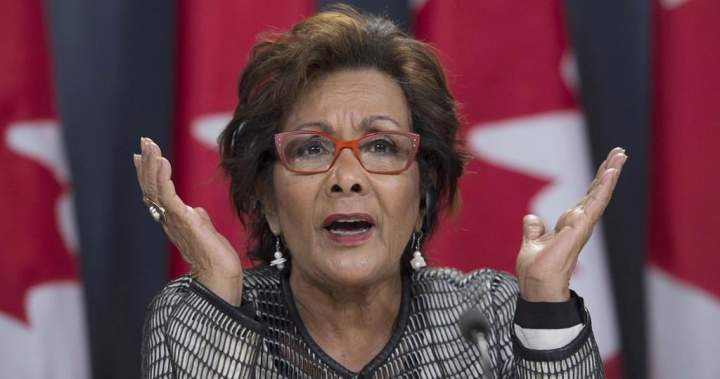I stood on the edge of a small, weathered porch in the town of Fernie, British Columbia. Across from me sat Meredith Avery, 45, her hands cradling a steaming mug of tea that sent wisps of vapor into the mountain air. Two years ago, Meredith’s life changed dramatically after what she describes as a severe reaction to a COVID-19 vaccine.
“Some mornings I can’t feel my legs,” she told me, her voice steady despite the weight of her words. “The doctors initially didn’t know what to make of it. By the time they connected it to the vaccine, I’d already lost my job as a ski instructor because I couldn’t work.”
Meredith’s story represents one facet of a growing national conversation about vaccine injuries and the systems designed to support those affected by them. Last week, Conservative MPs called for a complete overhaul of Canada’s Vaccine Injury Support Program (VISP), citing concerns about transparency, accessibility, and what they describe as unreasonable burdens of proof.
The federal program, launched in 2021, was created to provide financial support to people who experience a serious and permanent injury following vaccination with a Health Canada authorized vaccine. But critics say the system is failing those it was designed to help.
According to statistics from the VISP website, of the 2,233 claims submitted since the program’s inception, only 152 have been approved for compensation—less than 7 percent. The program has distributed approximately $11.2 million in compensation, but advocacy groups argue this represents just a fraction of those needing assistance.
For Dr. Eleanor Patel, an immunologist at the University of British Columbia who has studied vaccine safety for over two decades, the situation reflects the challenges of balancing public health messaging with support for rare adverse events.
“We know vaccines are extraordinarily safe, and serious adverse events are extremely rare,” Dr. Patel explained during our conversation at her campus office. “But when they do occur, those individuals deserve compassionate support without having to fight through bureaucratic obstacles.”
The current political attention stems from a motion introduced by Conservative MP Garnett Genuis, who has called for the House of Commons health committee to investigate what he terms “significant failures” in the program’s implementation.
When I reached out to Genuis by phone, he emphasized that his concerns weren’t about questioning vaccine safety broadly but ensuring support for those experiencing rare adverse events.
“This isn’t about undermining confidence in vaccines,” Genuis said. “It’s about making sure we have a fair, transparent system that actually works for the small number of Canadians who experience serious side effects.”
The motion specifically calls for examining whether the program sets an unreasonably high bar for proving causation between vaccines and subsequent health conditions. Currently, claimants must demonstrate “probable causal association” between vaccination and injury—a standard that some medical and legal experts consider problematic given the complex nature of many reported conditions.
In Cranbrook, I met with James and Karen Wolfe, whose daughter Sophia developed Guillain-Barré syndrome three weeks after receiving a vaccine in 2022. The neurological condition, which can cause paralysis, has been recognized as a rare possible side effect of certain vaccines.
“We spent over $47,000 on treatments and modifications to our home before the VISP claim was finally approved,” James told me as we sat in their living room, where medical equipment now occupies space once used for family gatherings. “We’re the lucky ones—our claim was eventually accepted. But the process took 19 months, and we nearly lost our house waiting.”
Health Canada maintains that the program follows international best practices for determining vaccine injury compensation. In a statement provided to Mediawall.news, a spokesperson noted that “all claims are assessed by an independent medical review board using current medical and scientific evidence.”
Yet data from the Public Health Agency of Canada shows that the average processing time for VISP claims has been approximately 18 months—a timeline that critics argue leaves families in financial and emotional limbo while awaiting decisions.
Dr. Kumanan Wilson, a physician and researcher at Ottawa Hospital Research Institute who helped design vaccine injury compensation programs, suggests that improvements are possible without undermining vaccine confidence.
“There’s room for a more efficient, transparent process,” Dr. Wilson told me during our video call. “We can acknowledge rare adverse events and support those affected while still maintaining that vaccines remain one of our most important public health tools.”
Indigenous communities have raised additional concerns about cultural barriers to accessing the program. During my visit to a health center on Vancouver Island, community health director Melissa Thomas pointed out that the application process itself can be prohibitive.
“The documentation requirements assume everyone has consistent access to specialists and medical records,” Thomas explained. “In remote communities, that’s simply not the case. We’re seeing people give up on claims because the process feels impossible.”
The current political pressure for program reform comes amid broader conversations about health system accountability. Last year, an independent review of Quebec’s provincial vaccine compensation program—which predates the federal system—led to significant changes in claim evaluation and support services.
As evening settled over the mountains during my final conversation with Meredith in Fernie, she reflected on what adequate support would mean for her life.
“I don’t expect to go back to who I was before,” she said, watching the alpenglow paint the surrounding peaks. “But I shouldn’t have to fight this hard to prove what happened to me while also trying to adapt to my new reality.”
Whatever changes may come to Canada’s Vaccine Injury Support Program, they will need to balance scientific rigor with compassionate accessibility—ensuring that the rare individuals who experience adverse events don’t become forgotten footnotes in our public health response.






